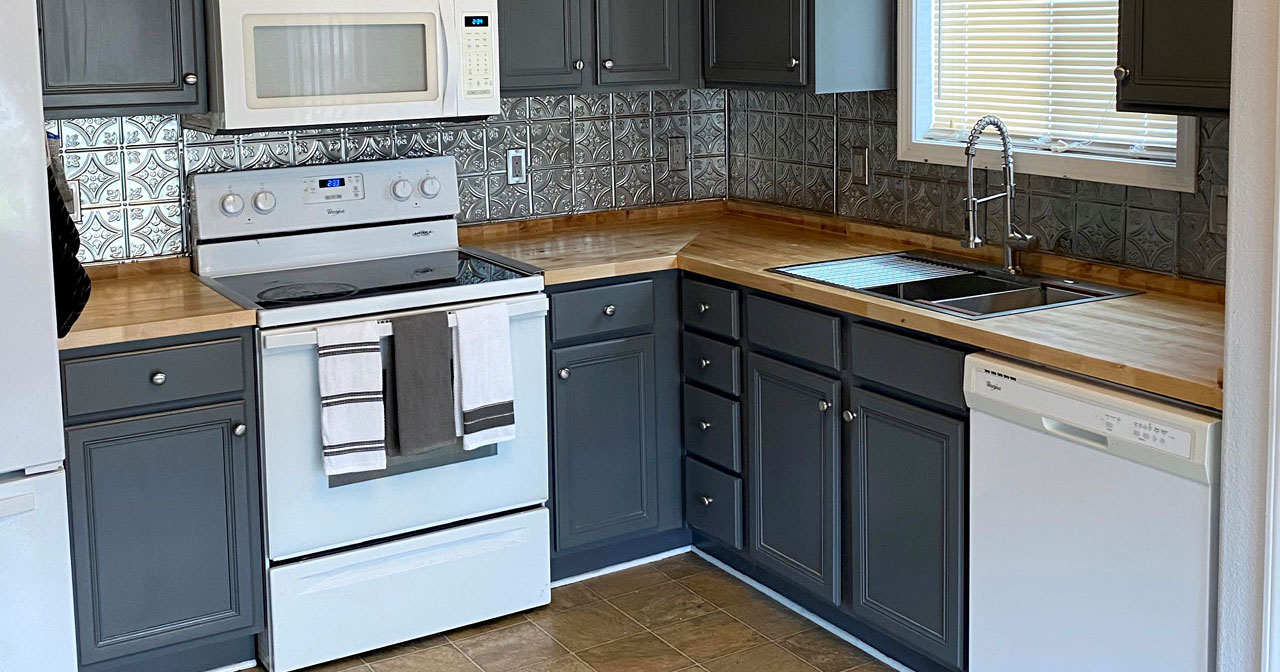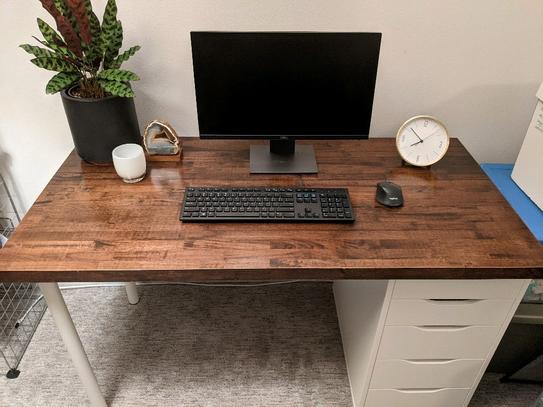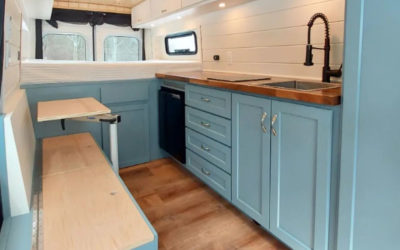If you’re considering butcher block countertops for your kitchen or dining room, chances are you have a lot of questions. From how durable they are to what their maintenance requirements are – It feels like there is a lot to know. But don’t worry!
We’ve compiled the top 7 most asked questions about butcher block countertops and hope this post will answer those pesky little nagging doubts.
It’s a known fact that butcher block countertops are the latest trend in home design. And for good reason! They’re affordable, sustainable, and add character to any space. But before you go off and buy one of these beauties at your local Home Depot, read this first.
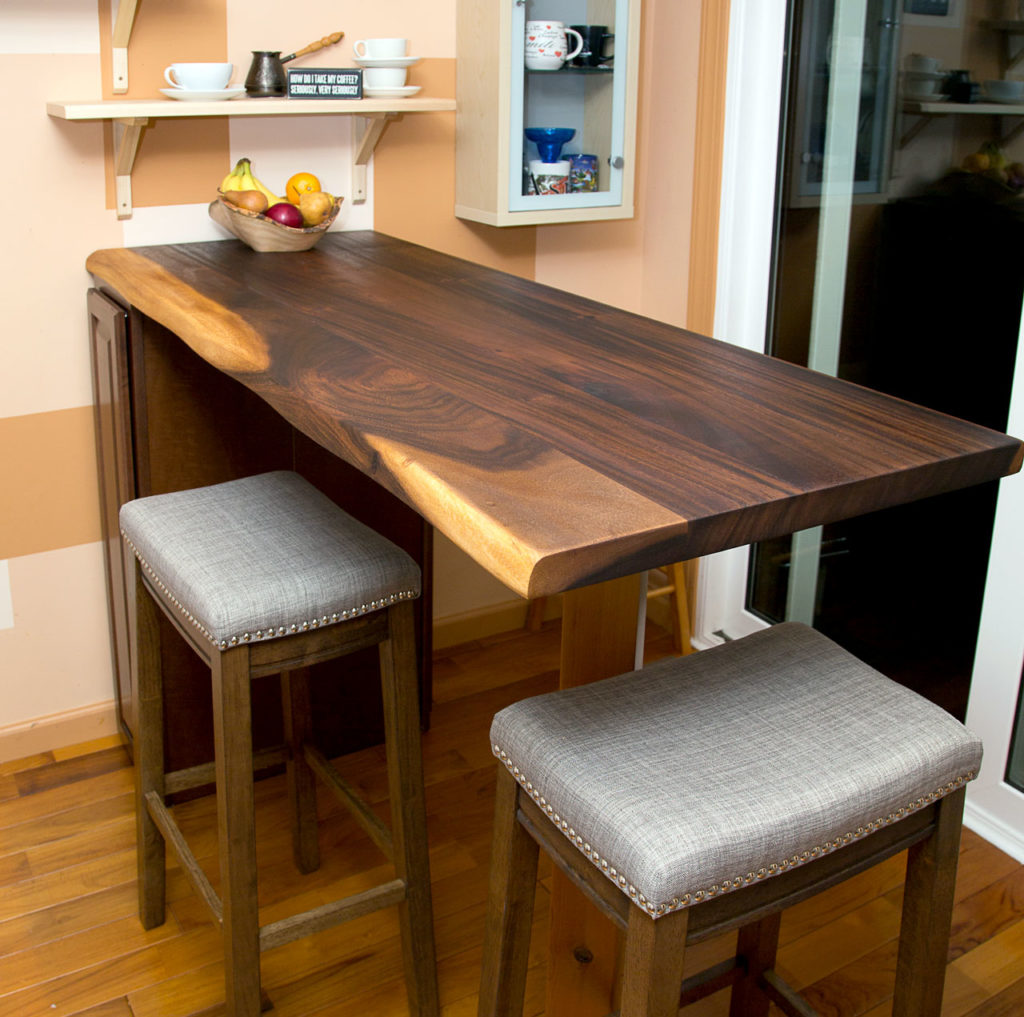
1. What is a butcher block countertop?
A butcher block countertop is a popular option for a kitchen countertop or island that has been made from wood. They can be made from nearly every tree species, but hardwood species like oak, maple, and cherry are most used. The wood is sliced into thin pieces (staves) and attached together to form the butcher block. Butcher block counters come in many different widths and lengths but typically are purchased unfinished so you can customize your top to match your design needs.
2. What are the benefits of butcher block countertops?
What makes this type of countertop so special? Well, one great feature is that it tends to be less expensive than granite or quartz, but still has many desirable qualities such as being durable and attractive.
Butcher block countertops offer an attractive alternative to laminate, tile, or quartz surfaces because they add warmth and character to the kitchen space.
Another awesome benefit of butcher block counters is that they can be sanded down and refinished without having any cracks appear like you might see with other materials over time.
If they get scratched or stained from spills or other mishaps then sanding them down and refinishing is an option to bring them back to perfect.
And lastly, butcher block gives every kitchen, bathroom, office, or bar a little “extra” when it’s used in countertops!
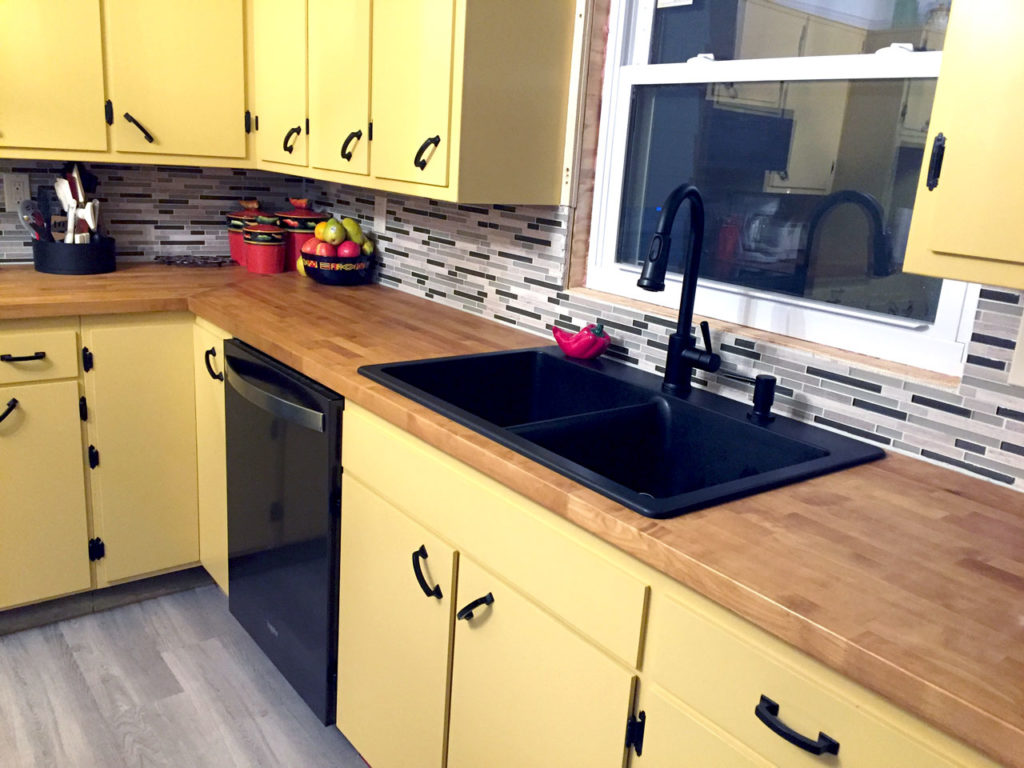
3. How do I care for my butcher block countertop?
Butcher block countertops are a great option for many reasons. They add warmth and character to your kitchen or dining room, they’re attractive and durable, but how do you keep them that way?
It’s important to remember that butcher blocks are still wood, so they will need the same care as any other type of furniture. Here are some tips on keeping your butcher block in pristine condition:
- Don’t use abrasive cleaners like bleach or ammonia on the surface. Abrasive cleaners can damage the finish of your wood and make it look duller over time.
- Wipe up spills immediately with a damp cloth (paper towels can leave behind lint)
- Make sure to avoid dragging cutlery across the surface
4. Are there any disadvantages to using a butcher block countertop?
The look of a butcher block countertop is rustic and natural. This type of material provides an interesting contrast to the sleek look that most people are used to.
Wood is susceptible to moisture and can expand or contract depending on the humidity levels if not finished or kept properly.
While not as “easy to clean” as stainless steel or laminate, there are many more benefits than drawbacks with this type of surface.
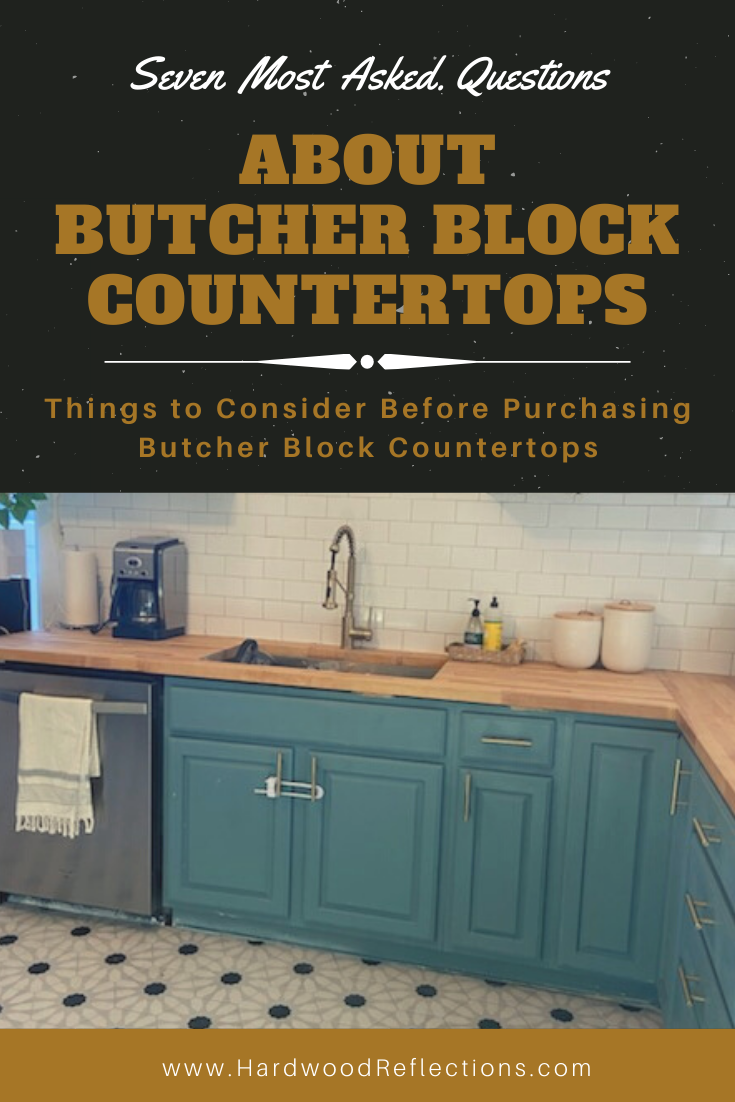
5. Do you need special tools to install a butcher block countertop?
If you are installing a butcher block countertop, then you may need to purchase some special tools. Butcher blocks can be installed with basic tools such as a table saw, router and drill but there are many other things that will make the installation much easier. There are many tutorials and DIY videos that can be easily followed for cutting, fitting, joining, and finishing.
See our YouTube Channel for Great Butcher Block Videos
TIP: We generally use alot of clamps to hold everything in place and stable during the process!
6. Where can I buy a butcher block countertop locally or online?
The best place is Home Depot! Our 10+ wood species options in varying lengths and widths can only be found at Home Depot. Most options are online order and are shipped directly to you. Home Depot stands behind our product too if anything should arrive in a less-than-desirable condition.
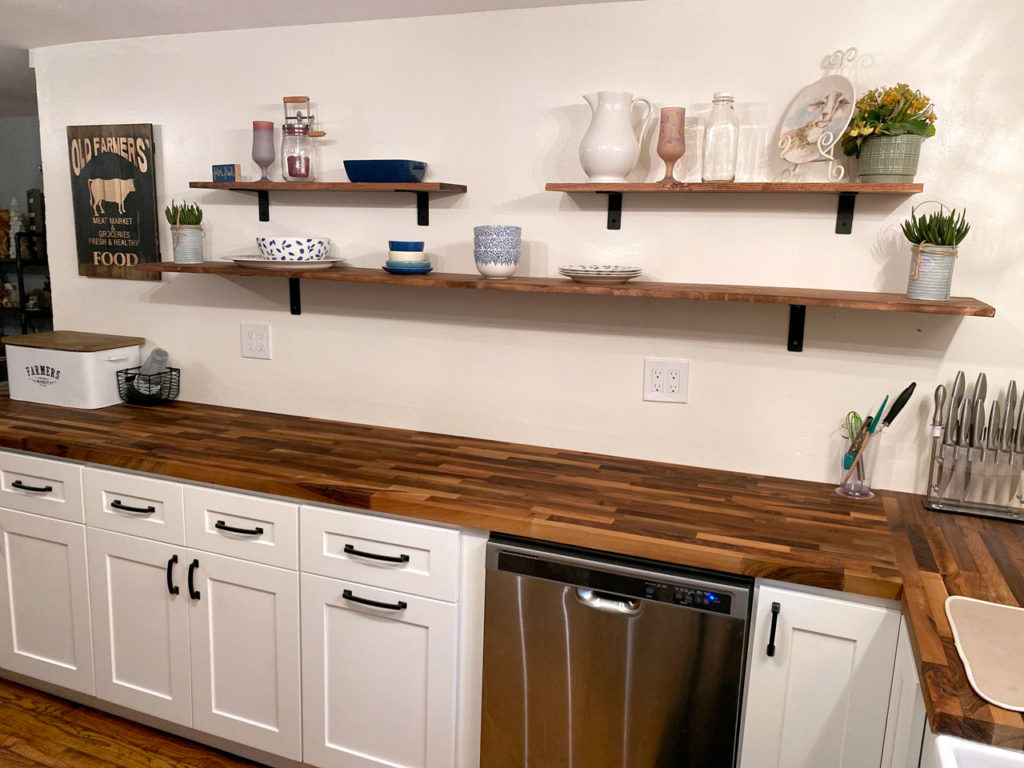
7. Is it worth it in the long run if I don’t take proper care of my new counters and they get ruined after a few years?
Proper upkeep of butcher block countertops that are finished with mineral oil or another natural oil is critical for a long, beautiful life. You may find the Rule of 7 for the initial application of the oil finish helpful — once a day for 7 days, once a week for 7 months, and then once a month for 7 months. After the initial application of the oil finish, periodic maintenance applications of oil, 1-2 times a year, will be needed when your block seems to be drying out. Sealing oils may include danish oil, mineral oil, tung oil, linseed oil, etc. You may find that certain oils like the danish oil will need less frequent applications.
If you do not intend to use your block as a cutting board, you can finish it in any sealant choice for less upkeep.
8. BONUS QUESTIONS!
Should I finish my butcher block with mineral oil or polyurethane? Do you want your kitchen countertop to look like it’s been lacquered with a shiny layer of clear varnish? Or do you prefer the natural, unfinished appearance that comes with mineral oil? The most popular oil finish is mineral oil because it’s safe for food prep areas that you intend to use as a butcher block.
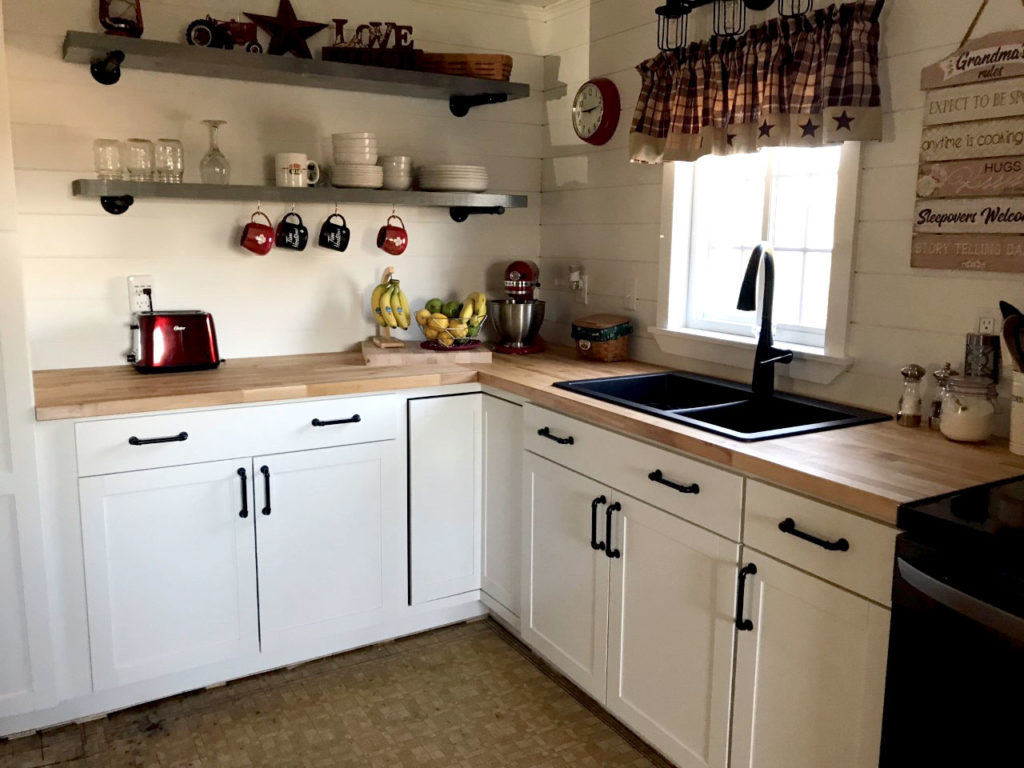
As you know, the countertop is the focal point of any kitchen, so when you are considering a new one, it’s important to make sure that you’re getting what you want.
Hardwood Reflections butcher block provides an opportunity for you to personalize your kitchen by adding your own DIY stamp through stains and sealants.
There are a lot of different materials out there for your counters-granite, quartz, and marble all offer their own unique look and feel. But if you really want something that will stand up against wear and tear from everyday life in the kitchen, look great for years to come, and cost less, then butcher block may be right for you.

